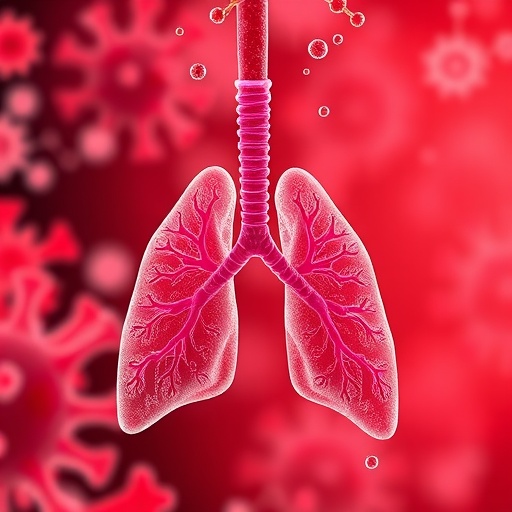Criminal charges not filed in 38% of child abuse and neglect deaths, new DCS data reveals – WRTV

Report on Child Fatality Prosecutions in Indiana and Alignment with Sustainable Development Goals
Introduction: Assessing Institutional Response to Child Fatalities
A recent report from the Indiana Department of Child Services (DCS) provides critical data on the state’s prosecutorial response to child fatalities resulting from abuse and neglect. This analysis is essential for evaluating Indiana’s progress toward several key Sustainable Development Goals (SDGs), particularly SDG 16, which aims to promote peace, justice, and strong institutions. The data offers a metric for assessing the effectiveness of the justice system in protecting vulnerable children, a core target of SDG 16.2, which calls for an end to abuse, exploitation, and all forms of violence against children.
Key Findings from the 2023 DCS Report
The DCS presented new data to the Interim Study Committee on Child Services, revealing significant challenges in achieving judicial accountability for child abuse and neglect deaths in 2023. Of the 56 child fatalities reviewed, the prosecutorial outcomes highlight a gap in the justice process, impacting the state’s commitment to SDG 16.3 to ensure equal access to justice for all.
- 38% of cases resulted in no criminal charges being filed by county prosecutors.
- 29% of cases led to the filing of charges and conviction of the perpetrator(s).
- 25% of cases had charges filed but are still pending in the judicial system.
- 9% of cases were closed due to the death by suicide of the alleged perpetrator.
These statistics underscore the urgent need for stronger institutional frameworks to ensure that all child deaths due to violence or neglect are thoroughly investigated and, where appropriate, prosecuted to the fullest extent of the law.
Systemic Challenges in Prosecuting Child Neglect and Abuse
Officials identified several systemic barriers to prosecution that impede progress toward SDG 16. These challenges highlight the need for improved institutional capacity and inter-agency collaboration, a principle of SDG 17 (Partnerships for the Goals).
- Burden of Proof: A primary obstacle is the differing evidentiary standards. DCS operates on a “preponderance of the evidence” standard (greater than 50% chance of responsibility), whereas criminal prosecutors must prove guilt “beyond a reasonable doubt.” This higher threshold makes securing convictions, particularly in complex neglect cases, difficult.
- Inter-Agency Coordination: The effectiveness of prosecution is strongly linked to the quality of local leadership and the alignment between DCS, law enforcement, and prosecutors’ offices. Harmony Gist, DCS Deputy Director, noted that areas with struggling leadership often see a “very big disconnect” between a child fatality and the filing of criminal charges.
- Focus on Surviving Children: Prosecutorial decisions can be influenced by whether other children in the home have been protected and the family is engaged in services. While this addresses the immediate welfare of survivors, it can impact accountability for a deceased child.
Legislative and Institutional Reforms for Transparency and Accountability
In response to these challenges, Indiana is pursuing reforms aimed at strengthening institutions and increasing transparency, in line with SDG 16.6 (Develop effective, accountable and transparent institutions).
Institutional Policy Changes
DCS has committed to enhancing its public reporting. Future annual reports on child fatalities will now include:
- Data summarizing the number of prosecutions filed and their status.
- Information on previously “screened-out” calls to the child abuse hotline involving the same child, perpetrator, and allegation type.
Legislative Actions
While a key transparency bill (House Bill 1152), which would have required DCS to issue public summaries within 90 days of a fatality investigation, failed to pass, other relevant legislation was signed into law. These new laws contribute to building a more robust child welfare system aligned with the SDGs.
- House Bill 1605: Aims to reduce the time children spend in foster care, supporting child well-being under SDG 3.
- House Bill 1412: Requires law enforcement to investigate allegations of failure to report abuse by institutional staff or volunteers, strengthening accountability under SDG 16.
- House Bill 1273: Creates a child welfare task force to study and report on systemic issues, promoting the development of effective institutions as per SDG 16.6.
Analysis of Sustainable Development Goals in the Article
1. Which SDGs are addressed or connected to the issues highlighted in the article?
The article highlights issues directly connected to two Sustainable Development Goals (SDGs):
-
SDG 3: Good Health and Well-being
This goal aims to ensure healthy lives and promote well-being for all at all ages. The article’s central theme of children dying from abuse and neglect is a direct challenge to this goal, as these are preventable deaths that cut short young lives and represent a severe failure in ensuring child well-being.
-
SDG 16: Peace, Justice and Strong Institutions
This goal focuses on promoting peaceful and inclusive societies, providing access to justice for all, and building effective, accountable, and inclusive institutions. The article extensively discusses the justice system’s response to child fatalities (prosecutions and convictions), the accountability of the Indiana Department of Child Services (DCS), and the legislative efforts to improve institutional transparency. These themes of justice, accountability, and institutional effectiveness are core to SDG 16.
2. What specific targets under those SDGs can be identified based on the article’s content?
Based on the article’s content, several specific targets under SDG 3 and SDG 16 can be identified:
-
Target 3.2: End preventable deaths of newborns and children under 5 years of age.
The article directly addresses this target by reporting that “56 children died from abuse and neglect” in 2023. These deaths are, by their nature, preventable. The case of Oaklee Snow, who was 3 years old, explicitly falls within the under-5 age group this target aims to protect.
-
Target 16.1: Significantly reduce all forms of violence and related death rates everywhere.
The entire article is about “related death rates” resulting from violence in the form of child abuse and neglect. The data provided by the DCS on the 56 child fatalities is a direct measure of this target’s relevance.
-
Target 16.2: End abuse, exploitation, trafficking and all forms of violence against and torture of children.
This is the most central target related to the article. The focus on “child abuse and neglect deaths” is the most extreme outcome of the failure to achieve this target. The state’s tracking of these cases is an effort to monitor and address this specific form of violence against children.
-
Target 16.3: Promote the rule of law… and ensure equal access to justice for all.
The article’s data on prosecution outcomes speaks directly to this target. The fact that “county prosecutors did not file criminal charges in 38% of child abuse and neglect deaths” raises questions about whether justice is being served for these child victims. The discussion about the different legal standards (“preponderance of the evidence” for DCS vs. “beyond a reasonable doubt” for prosecutors) highlights the complexities and potential barriers to achieving justice.
-
Target 16.6: Develop effective, accountable and transparent institutions at all levels.
This target is addressed through the article’s critique of the Indiana Department of Child Services (DCS). The “significant lag time” in reporting (the 2023 report was released in January 2025) points to issues with effectiveness and transparency. The failure of House Bill 1152, which “would have forced the state to reveal more about child abuse and neglect deaths,” is a setback for institutional transparency. Conversely, the new DCS director’s memo promising to include more data on prosecutions and screened-out calls in future reports is a step toward greater accountability.
3. Are there any indicators mentioned or implied in the article that can be used to measure progress towards the identified targets?
Yes, the article mentions and implies several quantitative and qualitative indicators that can be used to measure progress:
-
Number of child deaths from abuse and neglect
This is a direct, quantitative indicator for Targets 3.2, 16.1, and 16.2. The article states there were 56 such deaths in 2023.
-
Prosecution and conviction rates for child fatality cases
This is a set of quantitative indicators for Target 16.3 (Access to Justice). The article provides specific data for 2023:
- Percentage of cases with no criminal charges filed: 38%
- Percentage of cases with charges filed and pending: 25%
- Percentage of cases with perpetrators convicted: 29%
-
Timeliness of public reporting by government institutions
This is a qualitative indicator for Target 16.6 (Transparent Institutions). The article implies this is a problem area by noting that the “DCS released the 2023 report in January 2025,” highlighting a “significant lag time.” Improving this would indicate progress.
-
Data on prior agency contact
This is an indicator for Target 16.6 (Effective and Accountable Institutions). The article notes that for 2023, “none of the 56 deaths had a ‘screened-out’ report involving similar allegations.” The DCS’s new commitment to include data on “calls previously screened out regarding the same child, perpetrator, and allegation type” in future reports establishes this as a formal indicator of institutional effectiveness and accountability.
-
Enactment of transparency-focused legislation
This is a qualitative indicator for Target 16.6. The article reports that House Bill 1152, which aimed to increase DCS transparency, “failed to get a hearing in the Senate, which killed the bill.” The future success or failure of similar bills would serve as an indicator of progress toward more transparent institutions.
4. Table of SDGs, Targets, and Indicators
| SDGs | Targets | Indicators Identified in the Article |
|---|---|---|
| SDG 3: Good Health and Well-being | 3.2: End preventable deaths of newborns and children under 5 years of age. |
|
| SDG 16: Peace, Justice and Strong Institutions | 16.1: Significantly reduce all forms of violence and related death rates everywhere. |
|
| 16.2: End abuse, exploitation, trafficking and all forms of violence against and torture of children. |
|
|
| 16.3: Promote the rule of law… and ensure equal access to justice for all. |
|
|
| 16.6: Develop effective, accountable and transparent institutions at all levels. |
|
Source: wrtv.com

What is Your Reaction?
 Like
0
Like
0
 Dislike
0
Dislike
0
 Love
0
Love
0
 Funny
0
Funny
0
 Angry
0
Angry
0
 Sad
0
Sad
0
 Wow
0
Wow
0



















































.jpg.webp?itok=0ZsAnae9#)























